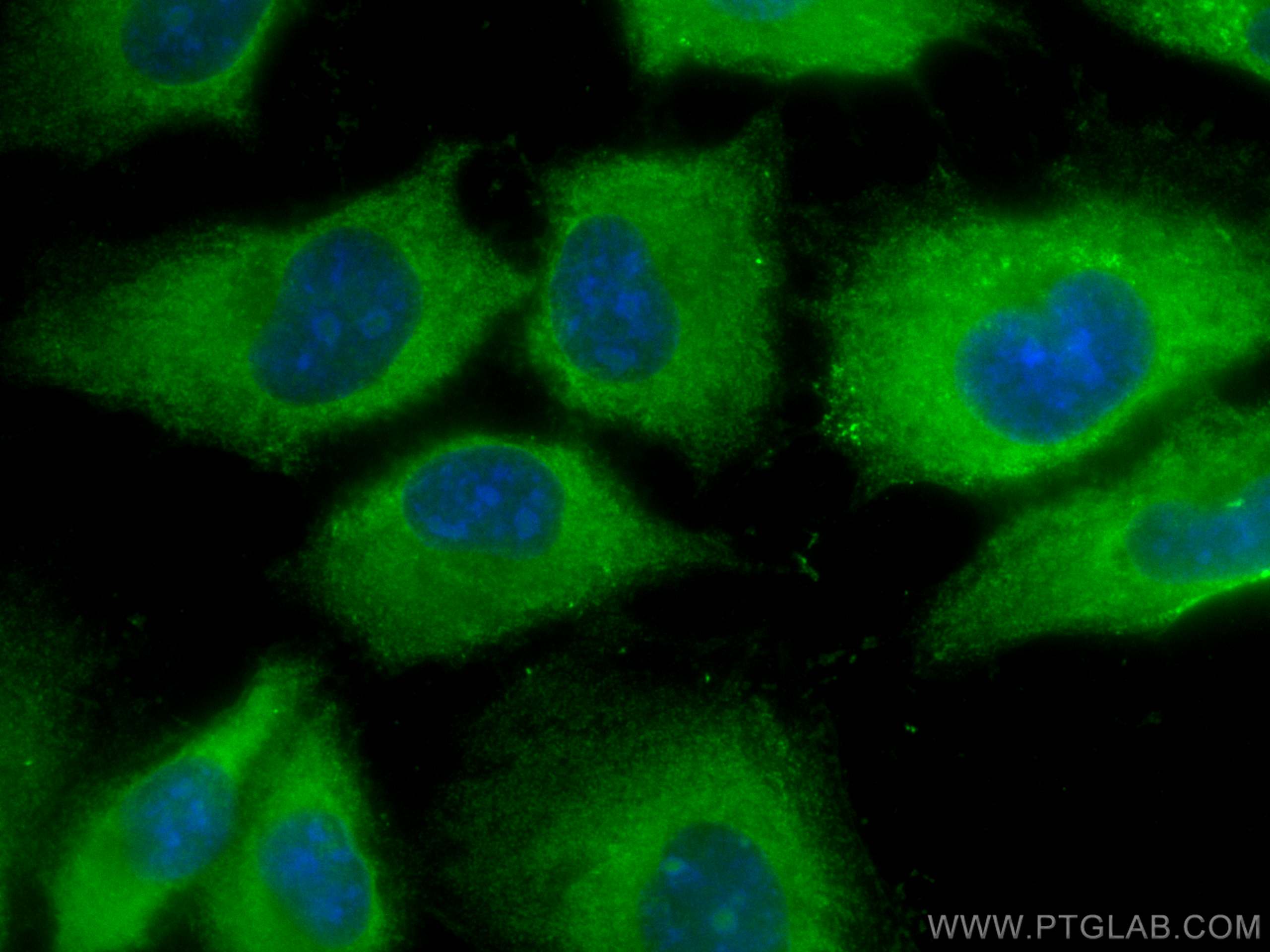Tested Applications
| Positive IF/ICC detected in | HUVEC cells |
Mouse monoclonal antibodies of IgM isotype can be detected with "anti-mouse IgG (H+L)" secondary antibodies.
Recommended dilution
| Application | Dilution |
|---|---|
| Immunofluorescence (IF)/ICC | IF/ICC : 1:50-1:500 |
| It is recommended that this reagent should be titrated in each testing system to obtain optimal results. | |
| Sample-dependent, Check data in validation data gallery. | |
Product Information
CL488-66268 targets C1qC in IF/ICC applications and shows reactivity with human samples.
| Tested Reactivity | human |
| Host / Isotype | Mouse / IgM |
| Class | Monoclonal |
| Type | Antibody |
| Immunogen |
CatNo: Ag10233 Product name: Recombinant human C1QC protein Source: e coli.-derived, PET28a Tag: 6*His Domain: 27-245 aa of BC009016 Sequence: QANTGCYGIPGMPGLPGAPGKDGYDGLPGPKGEPGIPAIPGIRGPKGQKGEPGLPGHPGKNGPMGPPGMPGVPGPMGIPGEPGEEGRYKQKFQSVFTVTRQTHQPPAPNSLIRFNAVLTNPQGDYDTSTGKFTCKVPGLYYFVYHASHTANLCVLLYRSGVKVVTFCGHTSKTNQVNSGGVLLRLQVGEEVWLAVNDYYDMVGIQGSDSVFSGFLLFPD Predict reactive species |
| Full Name | complement component 1, q subcomponent, C chain |
| Calculated Molecular Weight | 245 aa, 26 kDa |
| Observed Molecular Weight | 26 kDa |
| GenBank Accession Number | BC009016 |
| Gene Symbol | C1QC |
| Gene ID (NCBI) | 714 |
| RRID | AB_2934453 |
| Conjugate | CoraLite® Plus 488 Fluorescent Dye |
| Excitation/Emission Maxima Wavelengths | 493 nm / 522 nm |
| Form | Liquid |
| Purification Method | Thiophilic affinity chromatograph |
| UNIPROT ID | P02747 |
| Storage Buffer | PBS with 50% glycerol, 0.05% Proclin300, 0.5% BSA, pH 7.3. |
| Storage Conditions | Store at -20°C. Avoid exposure to light. Stable for one year after shipment. Aliquoting is unnecessary for -20oC storage. |
Background Information
The first component of complement, C1, is a calcium-dependent complex of the 3 subcomponents C1q, C1r, and C1s. C1q is composed of 18 polypeptide chains: six A-chains, six B-chains, and six C-chains. Each chain contains a collagen-like region located near the N terminus and a C-terminal globular region. Deficiency of C1q has been associated with lupus erythematosus and glomerulonephritis. This antibody is raised against C1qC which is the C-chain polypeptide of human complement subcomponent C1q.
Protocols
| Product Specific Protocols | |
|---|---|
| IF protocol for CL Plus 488 C1qC antibody CL488-66268 | Download protocol |
| Standard Protocols | |
|---|---|
| Click here to view our Standard Protocols |




